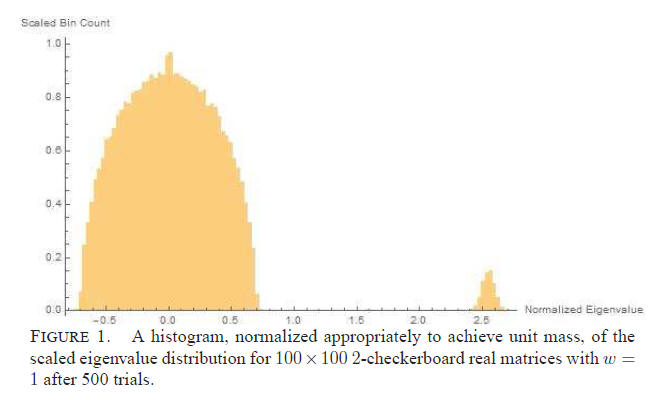-
We gave a poor mathematician's analysis of the size of n!; the best result is Stirling's
formula which
gives \(n!\) is about \(n^n e^{-n} \sqrt{2 \pi n} (1 +\) error of size \(1/12n +
\cdots)\). The standard way to get upper and lower bounds is by using the comparison method in calculus
(basically
the integral test);
we could get a better result by using a better summation formula, say Simpson's
method or Euler-Maclaurin;
we'll do all this on Wednesday.
We might return to Simpson's method later in the course, as one proof of it
involves techniques that lead to the creation of low(er) risk portfolios! Ah,
so much that we can do once we learn expectation..... Of course, our analysis
above is not for \(n!\) but rather \(\log(n!) = \log 1 + \cdots + \log n\); summifying a
problem is a very important technique, and one of the reasons the logarithm
shows up so frequently. If you are interested, let me know as this is related
to research of mine on Benford's law of digit bias.
-
It wasn't too hard to get a good upper bound; the lower bound required work.
We first just had \(n < n!\), which is quite poor. We then improved that to
\(2^{n-1} < n!\), or more generally eventually \(c^n < n!\) for any fixed
\(c\). This
starts to give a sense of how rapidly \(n!\) grows. We then had a major advance
when we split the numbers \(1, \dots, n\) into two halves, and got \(2^{n/2-1}
(n/2)^{n/2 - 1}\), which gives a lower bound of essentially \(n^{n/2} = (\sqrt{n})^n\).
While we want \(n/e\), \(\sqrt{n}\) isn't horrible, and with more work this can be
improved.
-
Instead of approximately all numbers in \(n/2, \dots, n\) with \(n\) we saw we
could do much better by using the `Farmer Brown' problem, and noting that if
we pair things so that the sums are constant, the largest product comes from
the middle, and thus each pair is dominated by \(((3n/4)^2)^{n/4}\). By
splitting into four intervals we got an upper bound of approximately \(n^n
2.499^{-n}\), pretty close to \(n^n e^{-n}\).
-
There are other approaches to proving Stirling; the fact that \(\Gamma(n+1) = n!\)
allows us to use techniques from real analysis / complex analysis to get Stirling by analyzing the integral. This is the
Method of
Stationary Phase (or the
Method of
Steepest Descent), very powerful and popular in mathematical physics. See
Mathworld
for this approach, or
page 29 of my handout here.


